- Home
- James A. Michener
The Covenant: A Novel Page 3
The Covenant: A Novel Read online
Page 3
‘You were the good hunter today!’ Gumsto shouted, inviting the other men to join, and they did, in celebration of the eland and Gao’s honest participation. As they danced, one man who stood aside began a song of praise for this eland who had defended himself so gallantly:
‘Head down, dewlap astray, dark eyes bleeding,
Sun on the rise, night forgotten and the glades …
He stands, he stands.
Hot sand at the hooves, dark pain in the side,
Sun at the peak, morning forgotten and the lakes …
He stands, he stands.
Dark head, white line along the flanks, sharp horns,
Soul of a dying world, eyes that pierce my soul …
He falls, he falls.
And I am left with the falling of the sun.’
While the other women dried strips of eland to take on the perilous journey, Kharu attended to the ostriches, and with Naoka at her side to learn this element of survival, she walked far south to where the huge birds sometimes nested. She was not concerned with the birds themselves, for they were barely edible; what she sought were their eggs, especially old ones that had not hatched and were dried in the sun.
When they had collected a score, their contents long since evaporated, they wrapped them carefully in the cassocks they wore, slung them over their shoulders, and returned to camp, where the men were much relieved to see their success.
‘We’re almost ready to leave,’ Kharu said, as if she had satisfied herself with omens, but before the clan dare move, she and Naoka must attend to the eggs. They carried them to the edge of the brackish water, and there, with a sharp stone awl, she made a neat hole in the end of each egg. Then Naoka submerged it in the lake, allowing it to fill. When all the eggs contained water, however poor, Kharu studied them for leakage and instructed Naoka in plugging the holes with wads of twisted grass: ‘These will keep the clan alive through two risings of the new moon.’
When the time came to assemble the travelers, Gao was missing, and a young hunter said, ‘He’s up there.’
High on the rear face of the hill, in a kind of cave, they found Gao standing by a fire. About his hips hung a rhinoceros-skin belt, from which dangled seven antelope tips containing his colors. On a sloping rock he had engraved with a series of puncturing dots his evocation of the dark rhinoceros which had escaped because of his carelessness. With purity of line he boldly indicated the head with one sweep from mouth to horn, using another unbroken line to show the huge bulk of the animal, horn to tail. It was in the representation of the hindquarters, however, that he was most effective, for with one swift stroke he indicated both the form of the ham and its motion in running. The front legs, thundering across the veld, he again indicated in one sweep of line, and the colors he used to show the animal in its swift movement through the grass vibrated against the heavy color of the rock.
Run through the grass, dark beast! Gallop over the unconquered savanna, horns high! For a thousand years and then ten thousand run free, head level with the earth, feet pumping power, line and color in perfect harmony. Even Gumsto, looking at the completed animal, had to admit that his son had transmuted the moment of defeat when the rhinoceros broke free into a glowing record of what had otherwise been a disappointing day, and he was personally proud when a singer chanted:
‘Earth trembling, sky thundering, heart catapulting,
He breaks free, earth thundering,
And my joy gallops with him …’
But he controlled his enthusiasm by warning his son, ‘You caught him with your paints. Now you must catch him with your arrows.’
Why did the San, these Bushmen—as they would be called later—take so much trouble to depict the animals they killed for food? Was it to release the soul of the beast so that it might breed again? Or was it expiation of the guilt of killing? Or an evocation of animal-as-god? It is impossible to say; all we know is that in thousands of spots throughout southern Africa these hunters did paint their animals with a love that would never be exceeded. Anyone who saw Gao’s rhinoceros would feel his heart skip with pleasure, for this was an animal that throbbed with life. It represented one of the purest expressions of art that man would achieve, and it came in the waking hours of human civilization. It was a product of man at his most unsullied, when artistic expression of the highest order was as natural and as necessary as hunting.
But Gumsto’s theory on the matter must also be taken seriously. He asked each of his hunters to stand by the fire and look at the rhino over the left shoulder: ‘It’s bound to bring us good luck.’ He knew that art contained a much-needed talismanic power.
In the 1980s experts from other continents would hear of this rhinoceros and come to stand in awe at the competence of the artist who had created it. One critic, familiar with Lascaux and Altamira, would say in his report:
This splendid rhinoceros, painted by some unknown Bushman, is as fine a work of art as anything being done in the world today. Fortunately, someone built a fire in the cave, so we can carbon-date it to 13,000 B.P.E. (Before the Present Era), which makes us wonder at the excellent technical quality of the pigments, which seem much better than the ones we use today. But the excellence of this work lies in the power with which the animal is depicted. He is real. He flees real hunters whom we do not see. His head is held high in the joy of victory. But there is more. This is an evocation of all animals as seen by a man who loved them, and with this wild and joyous rhinoceros we gallop into worlds we might otherwise not have known.
Since the San could never know when they might kill another animal, when they did get one they gorged outrageously—eat, sleep, eat, fall in a stupor, eat some more—after which an amazing transformation occurred: the deep wrinkles that marred their bodies began to disappear; their skins became soft and rounded once more; and even old women of thirty-two like Kharu filled out and became beautiful, as they had been years before. Gumsto, seeing her thus, thought: She’s beautiful the way I remember her. But then he saw Naoka lying insolently in the sun and he had thoughts that were more pertinent: But Naoka’s going to look beautiful tomorrow, too.
After the eland was consumed, Gumsto said, ‘In the morning we start,’ and all that night he stood beside the lake that had comforted his people. He watched the animals come and go and was pleased when the zebra and the antelope stayed close together, each to its own clan, all members obedient to one general discipline which enabled them to survive attacks by the prowling lions.
At dawn, as if to send the travelers on their way, a host of pink flamingos rose from the far end of the lake and flew in drifting arcs across the sky, turning at the other end and doubling back in lovely involuted curves. Back and forth they flew some twenty times, like the shuttle in a loom weaving a cloth of pink and gold. Often they dipped low as if about to land, only to sweep suddenly upward to form gracious designs in their tapestry, the bright pink circles on their wings spilling through the air in vivid color, their long red legs trailing aft, their white necks extended fore.
As Gumsto watched them, they circled for the last time, then headed north. They, too, were abandoning this lake.
When the file formed up, twenty-five persons one behind the other, Gumsto was not in the lead. That spot was taken by old Kharu, who carried a digging stick and about her shoulders a skin garment in whose flowing cape she had wrapped four ostrich eggs filled with water. Each of the other women carried the same supply, with little girls caring for only two.
She was in command because the clan was heading due west for five days to a spot where, two years before, Kharu had buried an emergency nest of nine eggs against the day when stragglers reached there exhausted. Since they were leaving this area, she wanted to recover those eggs and take them with her.
As they moved into land where few lakes or springs existed, she became the spiritual leader, for she knew the curious places where dew-water might be hiding. Or striding along earth so parched that water might never have existed there, she wo
uld spy a tendril so brown and withered that it must be dead, but when with her digging stick she traced it far underground, she would find attached to the vine a globular-root which, when dragged to the surface and compressed, yielded good water.
She enforced one inviolable rule: ‘Do not use the ostrich eggs.’ She was in charge of the water, and would allow no one to touch it. ‘Dig for the roots. Drink them.’ The ostrich eggs must be reserved for those frightening days when there were no roots.
Gumsto’s clan did not inhabit this vast area alone. There were other San tribes hidden away in the savanna, and often they would meet as their journeys crisscrossed, and sometimes a woman from one clan would leave to marry a hunter from another, or children whose parents had died would be adopted from group to group. And in these chance meetings Gumsto’s people would hear of other bands less fortunate: ‘They went into the desert without enough water and were seen no more.’
It was Kharu’s responsibility to see that this did not happen to her people, and often as they walked she would pass many trees without stopping, then notice one with a slightly different look, and when she went to that tree she would find trapped in the fork where branch met trunk a cache of sweet water.
Best of all, she would sometimes walk ahead for two or three days, her ostrich eggs bouncing behind, convinced that water lay hidden somewhere—her eyes sweeping from one horizon to the other. Then, stopping for the others to catch up with her, and in obedience to some signal they could not detect, she would indicate with her digging stick that all must head in this direction, and when they attained a slight rise they would see a far bank covered with vines bearing tsama melons, speckled, smaller than a man’s head and filled with loose pulp from which extraordinary amounts of water could be extracted.
A tsama melon, Gumsto decided, was among the most beautiful objects in the world, almost as lovely as Naoka. He had been watching the girl, and was impressed by the manner in which she listened to Kharu’s instructions in the rules for survival; at the end of this journey the girl was going to be competent to lead her own band across deserts, and Gumsto intended sharing that leadership with her.
‘I am still thinking about Naoka,’ he told Kharu one night.
‘I think about her, too,’ the old woman said.
‘You do?’
‘She will soon be ready to lead this clan. But she must have a husband, a young one, and if we can’t find her one, we should give her to some other clan, for she is going to be a strong woman.’
Gumsto was about to say that he had seen enough of strong women, but Kharu interrupted: ‘There are the thorn bushes!’ and when she ran to them and uncovered the nine hidden ostrich eggs, she found the water still sweet. Sighing with gratitude, she said, ‘Now we can enter the desert.’
Gumsto spent that night beset by two nagging problems: he could not understand how old Kharu could frustrate every plan he devised for taking Naoka to be his extra wife; and he could not cease staring hungrily at that beautiful girl. It was tantalizing to see her, smooth-skinned and lovely in the moonlight, with dust upon her long legs, lying so near to him and yet untouchable.
But as the long night passed, he had to admit that on one basic fact, Kharu was right. If she could instruct Naoka, a girl she disliked, in the principles of survival, he was obligated to speed his son’s induction into manhood, and if in so doing, he qualified Gao to marry Naoka, that was a small price to pay for the safety of the clan. So he began investigating the terrain, looking for locations where eland might be grazing.
It was he who now walked at the head of the file, for the clan was penetrating land they had not touched before, and quick decisions where often necessary. They were a curious lot as they walked bravely into the arid lands, with four peculiarities that would astonish all who came in contact with them later.
Their hair did not grow like that of other people; it appeared in little twisted tufts, separated one from the other by considerable space of empty scalp.
The women had buttocks of enormous size, some projecting so far backward that they could be used by babies to ride upon. Steatopygia this phenomenon would be called (suet buttocks), and it was so pronounced that alien observers frequently doubted the evidence of their own eyes.
Their language was unique, for in addition to the hundred or so distinctive sounds from which the world’s languages were constructed—the ich of German for example, or the ñ of Spanish, the San added five unique click sounds formed with lip, tongue and palate. One click sounded like a noisy kiss, one like a signal to a horse, one a clearing of the throat. Thus Gumsto used the normal complement of consonants and vowels, plus the five clicks, making his speech an explosive chatter unrivaled in the world.
The male penis was perpetually in a state of erection. When the first observers reported this to an incredulous world, explorers rushed to confirm the miraculous condition, and one French scientist said, ‘They are always at the ready, like a well-trained unit of infantry.’
When they were far into the desert, their search for food became so imperative that they could not make much forward progress, but even so, their drift toward the west and south was irreversible, and as the moons changed they passed deeper and deeper into the desert. It was not an endless sweep of white sand, such as the desert of northern Africa would become in historic periods; it was a rolling, brutal mix of isolated rock sentinels, thorn bush clinging to the red sun-bleached surface, little animals scurrying about at night, larger antelope and their predators moving by day in ceaseless search for water, but never seen. To venture forth upon this cruel expanse of blazing noontimes and bitterly cold nights even if one had adequate food and water would be daring; to try to cross it as these Bushmen were doing was heroic.
One afternoon Kharu, always casting about with hungry eyes, leaped in the air like a gazelle, shouted, ‘Ooooooooo!’ and sped across the desert like an antelope with torn and dirty coat. She had spied a tortoise, and when she captured it, with the band cheering, she looked up in wrinkled triumph, her tiny hands holding the delicacy above her head. A fire was quickly started from the rapid friction of two sticks, and when the coals were hottest the tortoise was pitched upon them, upside down, and there it sizzled, sending its precious aroma through the clan.
The steam popped its shell apart, and when it cooled Kharu apportioned its meat and juices, not much more than a smear to each of the twenty-five, and an extra dab to Kusha, who was pregnant, and although the amount each received was scarcely enough to chew, it had a wondrous effect, for it reminded the small people of what food was like. It could not possibly have satiated anyone, but it sustained everyone.
The problem of water was equally acute, for in the desert none was found in the tree forks, and often there were no trees. Tsama melons, which could survive almost anywhere, were sparse and shriveled in this terrain. The wanderers had been forced to draw upon the ostrich eggs until there were only nine left, but Kharu knew from past adventures that this water must be kept for the last extremity, and they were far from that. With her stick she dug for roots that might contain a tiny bit of liquid and allowed her people to chew on these until their mouths were wet. She sought any shrub that might have trapped an accumulation of dew, and always she looked for indications that some deep-hidden trickle was moving beneath the rocky sand.
When she located such a spot she dug as deeply as she could with her hands, then pushed a long reed beneath the surface. If she guessed right, she could painfully suck out small amounts of water, drop by drop, and take them into her mouth but not drink them. Along another reed, which she held in the corner of her lips, she let the water trickle down into an ostrich egg, from which her threatened companions would later drink.
When two days passed with no water at all, it was obvious that she must begin to draw upon the nine eggs, and in accordance with ancient tradition she drew first upon the seven carried by others, reserving hers for what were called ‘the dying days.’ Each noon, when the sun was the hottest, s
he moved among her people, encouraging them: ‘We will find water soon,’ and she would refuse them a ration, but in the late afternoon, when they had survived the worst, she would order an egg to be passed, not to drink, but for a wetting of the lips, and as the water diminished a mysterious phenomenon overtook the women who carried the eggs. As long as the eggs were full and heavy they constituted a burden pulling down on the women’s shoulders; but even with this weight, they moved with light steps, knowing that they carried the safety of all; but when the water was drunk, making the eggs no longer a burden, the women walked painfully, their shoulders hungry for the lost weight, their minds always brooding upon their inability to be of further service because of their empty shells.
Kharu, feeling the consoling heaviness of her eggs, knew that as long as she could retain them, the clan could live, but the afternoon came when she, too, had to broach one of them, the next to last, and when the journey resumed she could detect the difference in weight, and the terror began.
As the senior woman she had another obligation not to be avoided: it came when Kusha went into labor, forcing the band to halt in a barren stretch of sand. It was the custom for pregnant women about to deliver to move apart from the others, seeking some gully or tree-protected glade, and here, unaided, to bring forth the newborn, and Kusha did this, but after a while she summoned Kharu, and the withered old woman went behind the hillock to find that Kusha had delivered twins, a boy and a girl.
She knew instantly what she must do. Placing the tiny female at Kusha’s breast, she took the male aside and with her digging stick prepared a shallow grave. With gentleness she placed the boy in it, and hardened her heart when he began to cry. Quickly she smothered the babe by throwing down earth to refill the hole, for although children were needed to keep the clan vital, twins were omens of bad luck, and when a choice as painful as this became obligatory, it was always the male that was sacrificed. Even one extra infant, during a desert crossing, would consume water that might prove critical.

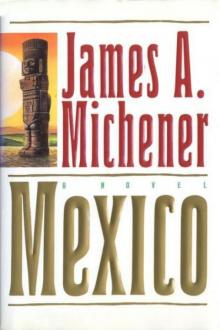 Mexico
Mexico The World Is My Home: A Memoir
The World Is My Home: A Memoir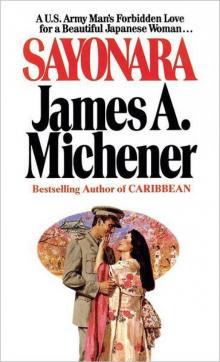 Sayonara
Sayonara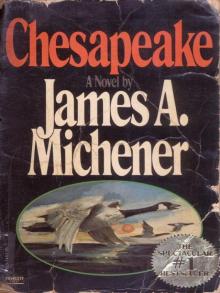 Chesapeake
Chesapeake The Novel
The Novel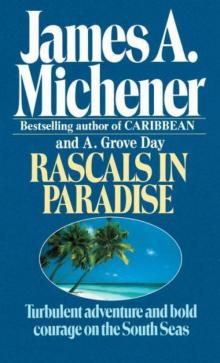 Rascals in Paradise
Rascals in Paradise Return to Paradise
Return to Paradise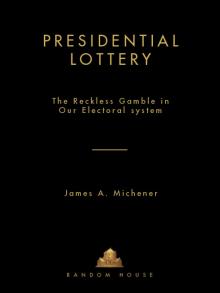 Presidential Lottery: The Reckless Gamble in Our Electoral System
Presidential Lottery: The Reckless Gamble in Our Electoral System The Source
The Source Poland
Poland Space
Space Caravans
Caravans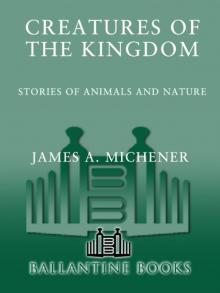 Creatures of the Kingdom: Stories of Animals and Nature
Creatures of the Kingdom: Stories of Animals and Nature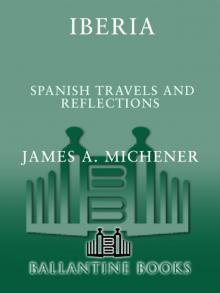 Iberia
Iberia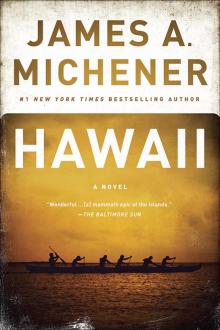 Hawaii
Hawaii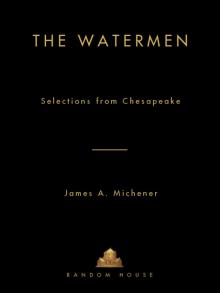 The Watermen: Selections From Chesapeake
The Watermen: Selections From Chesapeake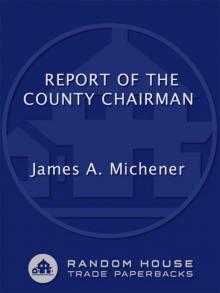 Report of the County Chairman
Report of the County Chairman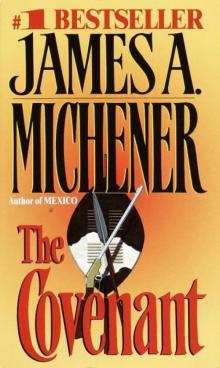 The Covenant
The Covenant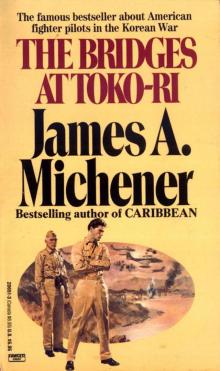 The Bridges at Toko-ri
The Bridges at Toko-ri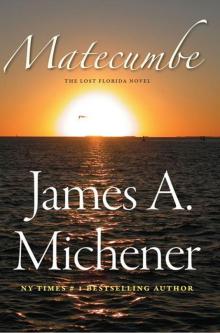 Matecumbe
Matecumbe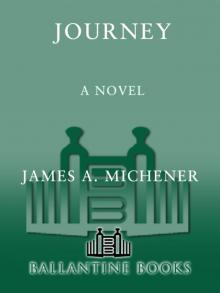 Journey: A Novel
Journey: A Novel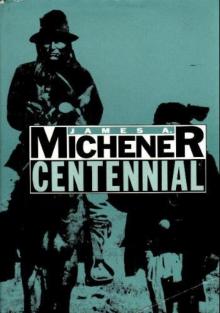 Centennial
Centennial Sports in America
Sports in America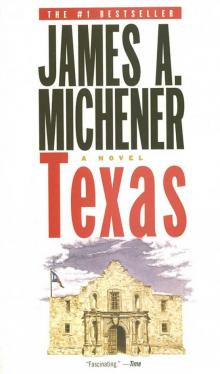 Texas
Texas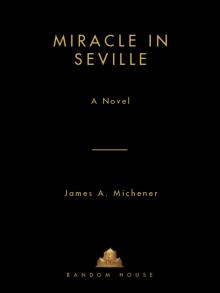 Miracle in Seville
Miracle in Seville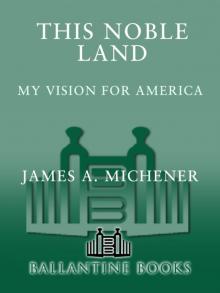 This Noble Land: My Vision for America
This Noble Land: My Vision for America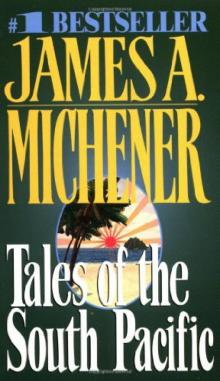 Tales of the South Pacific
Tales of the South Pacific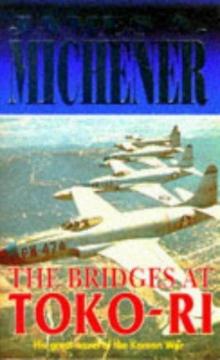 Bridges at Toko-Ri
Bridges at Toko-Ri Space: A Novel
Space: A Novel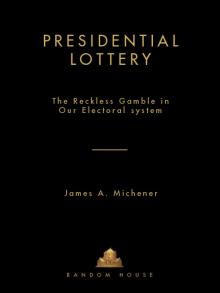 Presidential Lottery
Presidential Lottery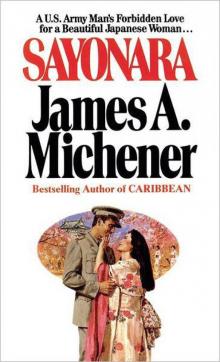 Sayonara: A Novel
Sayonara: A Novel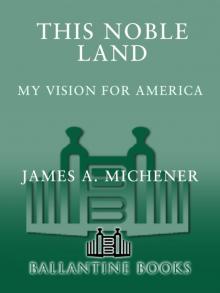 This Noble Land
This Noble Land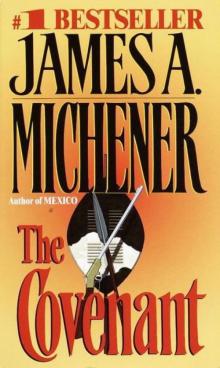 The Covenant: A Novel
The Covenant: A Novel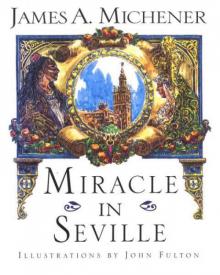 Miracle in Seville: A Novel
Miracle in Seville: A Novel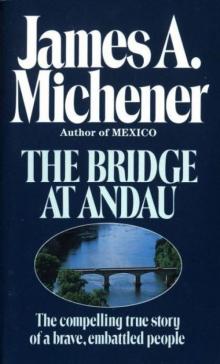 The Bridge at Andau
The Bridge at Andau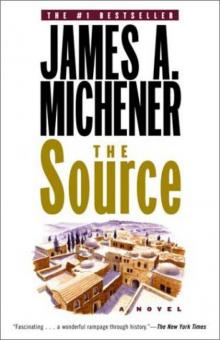 Source
Source The Source: A Novel
The Source: A Novel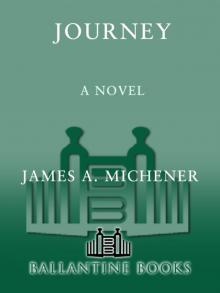 Journey
Journey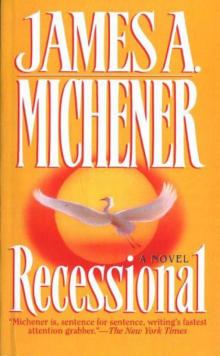 Recessional: A Novel
Recessional: A Novel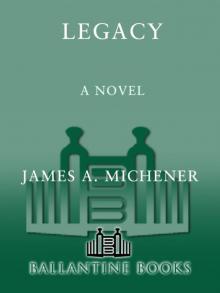 Legacy: A Novel
Legacy: A Novel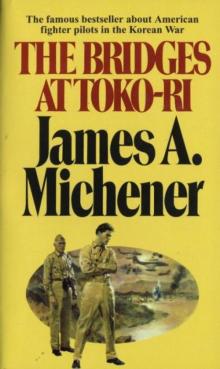 The Bridges at Toko-Ri: A Novel
The Bridges at Toko-Ri: A Novel Poland: A Novel
Poland: A Novel